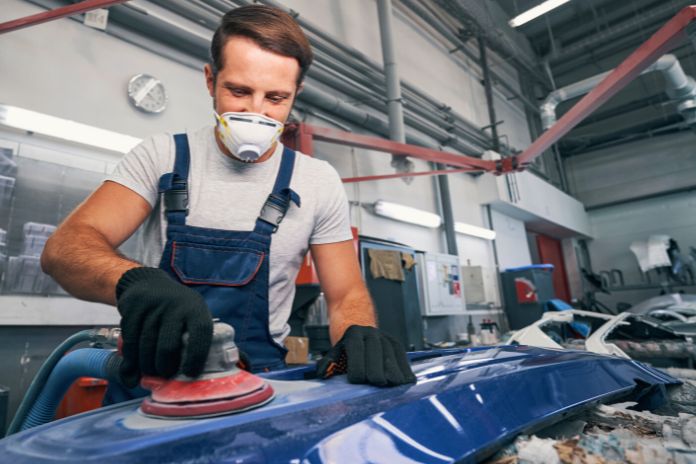
If you’re planning on painting your car, sanding is a crucial first step. Whether you’re getting started on a classic car restoration or simply want to upgrade your current model, the key is to get the surface as smooth as possible without damaging the sheet metal. Sanding your car before painting is an important step in achieving a smooth finish and ensuring the paint job will last. Here are some tips for properly sanding your car before a paint job.
Gather Your Supplies
Before you begin sanding your car, make sure you have all the necessary supplies on hand. This includes sandpaper of varying grits (coarse, medium, and fine), a block sander, tack cloths, spray bottles filled with water, masking tape and paper, and some form of dust collection system (such as a handheld vacuum). Having these items readily available will help ensure you don’t miss any steps in the process or overlook any corners when sanding your car.
Prepare the Area
If you want to ensure quality results from your sanding efforts, it’s vital that you put in the proper preparations beforehand. Mask off any areas that don’t need sanding, such as windows and trim pieces. Cover them with plastic or tape to protect them from dust and debris created by the sanding process. This is also a good time to wash your car and remove all dirt and grime from its surface. You don’t want anything getting into your paint job later on.
Use the Right Grits
Another crucial tip for properly sanding your car before a paint job is to use the proper sandpaper grits at the right times. Choosing the right sandpaper for your autobody work is vital to removing sharp edges and creating the perfect surface to accept your paint of choice. The type of sandpaper you use depends on the vehicle’s overall condition. For example, if you’re working with rust, you should use 80-grit or 100-grit sandpaper. If there are no major blemishes or rust spots, you can start with 220-grit paper. Once you’ve removed imperfections with coarse cloth, you can move up to 400-grit paper for a smoother finish.
Take Your Time
Above all, make sure you work slowly and methodically when sanding your car before painting. Don’t rush through this process; take your time so that you don’t end up with an uneven finish or scratches in your sheet metal from applying too much pressure. Working slowly also makes it easier to keep an eye out for any missed spots. This will allow you to move over each area multiple times until it’s perfectly smooth.
Sanding your car prior to painting is an essential step in achieving a flawless finish that will last for years. With these tips in mind, you can achieve great results when it comes time for paint application. Use these tips today to make for a sleeker-looking ride tomorrow.







